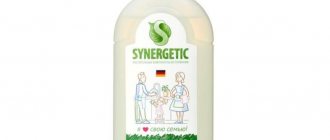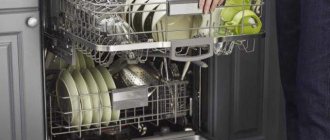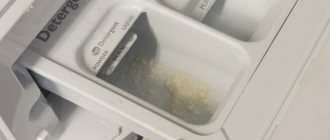How to wash a cat's litter box and how to remove urinary stones? A huge number of owners of domestic cats and especially cats are looking for the answer to this question every day. For those who do not yet have a furry pet, but the thought of the need to acquire a new friend has not left for a long time, such knowledge will also not be superfluous.
First of all, future owners study information about the rules of nutrition and keeping animals. But in the realities of life, people most often face not so much these difficulties as the problem of the smell emanating from the cat’s potty. This will especially complicate life for those who keep the animal exclusively at home, without letting it go outside at all. Daily washing of the tray for collecting feces eventually ceases to relieve the stench, and the “cat spirit” can already be felt far beyond the confines of the bathroom. This happens not because the tray was not washed, but because it was done incorrectly. Increased odor may also be caused by urinary stone growths.
For a comfortable neighborhood, you need to learn as much as possible about the proper care of cats and their litter boxes. The nuances of washing and the secrets of preventing odor will be revealed in this article. Choose the appropriate option for yourself and enjoy living together with a fluffy and mustachioed purring bundle!
Ways to get rid of odor
Cats are one of the most common pets. Manufacturers of pet products offer a large number of different products to get rid of the smell of cat litter. Resourceful housewives, in turn, instead of expensive chemicals, use improvised means to effectively clean the animal’s tray.
What does chemical production offer?
Relatively recently, cat owners used improvised means such as pieces of newspaper, sand and sawdust as filler. They absorbed liquid quite well, and the sawdust even absorbed the unpleasant odor. However, the paper had to be changed frequently, and sand and sawdust quickly spread throughout the house. Today, many special fillers are produced that have a large number of advantages.
Wood pellets are the most popular and sought after cat litter.
Fillers for trays are divided into several main types depending on the principle of action and composition:
| Type of filler | Peculiarities |
| Woody | The most popular and inexpensive type of cat litter. It is compressed sawdust that swells when urine comes into contact with it. Wood is a natural hypoallergenic material that perfectly absorbs unpleasant odors. Suitable for cats of any age and breed. The only drawback is that it smells unpleasant when cleaning |
| Corn | This is another option for natural filler. It is made from corn cobs. The result is a composition that can absorb liquid well and retain odors. The only drawback is its lightness, due to which the grains quickly spread throughout the house. |
| clumping | It is a mixture of bentonite clay and minerals. When moisture gets in, it turns into a lump, which can be easily removed using a special scoop. Manufacturers offer flavored and neutral mixtures consisting of large or small granules. It is not recommended to use this litter for kittens, as accidental ingestion is dangerous for the health of the animal. |
| Zeolite | It is made from volcanic minerals - zeolites. Supplied in the form of granules that can quickly absorb liquid and absorb odors. In this case, urine is absorbed not only into the top layer of the filler, but is distributed evenly over all granules. Very economical: if you fill a tray with a layer of at least 5 cm, you will have to completely change the filler no more than once a week |
| Silica gel | The most modern and expensive type of filler. It consists of transparent synthetic crystals that are able to absorb large amounts of liquid while remaining dry. Despite the high cost, it is very economical: if you fill it in a tray with a layer of 5 cm, a complete replacement of the filler will be needed in two to three weeks (per animal). In addition, it has a pronounced antibacterial effect. The only drawback is the sharp edges of the crystals and the loud rustling sound, which can scare away the animal |
The video below clearly demonstrates the properties of various modern fillers:
Regardless of which filler is chosen, owners should monitor its condition and change it as it becomes dirty. Moreover, cats are very clean creatures and many of them will not use a dirty litter box. Cleaning will not take much time. All you need to do is remove the contaminated sorbent and add clean material. The frequency of complete litter replacement depends on its type and the number of animals in the house.
Zeolite filler – natural sorbent for cat litter
Traditional methods
If an unpleasant smell from a cat's litter box has spread throughout the apartment, you can get rid of it using substances that almost every housewife has on hand.
If your cat's litter box stinks even after you've cleaned it and completely removed the feces, it's most likely caused by uric salts that have accumulated on the sides of the litter box. table vinegar , which is recommended to be periodically poured into the tray for 30-60 minutes, will help deal with plaque After this procedure, the stone is easy to clean with a brush or sponge. The container will become clean and the vinegar aroma will quickly disappear.
Hydrogen peroxide and regular baking soda are effective means of using a chemical reaction to eliminate unpleasant odors and wash away dirt. The surface to be treated should be generously covered with soda. After preparing a solution consisting of 100 ml of hydrogen peroxide, 0.5 teaspoon of detergent and 100 ml of water, pour it into a spray bottle. Sprinkle the product evenly over the baking soda and leave for 2-3 hours. After the time has passed, remove the composition and rinse the tray thoroughly with water. There will be no trace left of the pungent odor.
Regular cleaning of the litter box ensures the absence of the characteristic odor from cat litter
If the kitten is not yet accustomed to going to the toilet in a specially designated litter box, the owners have to deal with the unpleasant odor emanating from secluded places. Helpers in this case can be:
- Whiteness is a chlorine-containing liquid with a pungent odor. A surface treated with this product will permanently discourage the kitten from voiding in the wrong place.
- Ammonia . To quickly accustom your animal to the litter box and eliminate the unpleasant odor, you can treat the surface with this product, similar to white, or you can soak cotton balls and place them in the cat’s favorite places.
A solution of potassium permanganate and laundry soap are effective means at hand that can not only eliminate the foul odor, but also clean and disinfect the contaminated surface.
We recommend: How to clean the air conditioner at home yourself
This video allows you to see how easy it is to remove the foul odor from the tray using improvised means:
Video
Some more useful information is presented in the video below:
Text: Nadezhda Chernobay
Found a mistake? Select the text with the mouse and click:
There are special traps to combat moths. The sticky layer with which they are covered contains female pheromones that attract males. By sticking to the trap, they are eliminated from the reproduction process, which leads to a decrease in the moth population.
Stretch ceilings made of PVC film can withstand from 70 to 120 liters of water per 1 m2 of their area (depending on the size of the ceiling, the degree of its tension and the quality of the film). So you don’t have to worry about leaks from neighbors above.
If your favorite things show the first signs of gestation in the form of untidy pellets, you can get rid of them using a special machine - a shaver. It quickly and effectively shaves off clumps of fabric fibers and returns things to their proper appearance.
Fresh lemon is not only suitable for tea: clean dirt from the surface of an acrylic bath by rubbing with half a cut citrus, or quickly wash the microwave by placing a container of water and lemon slices in it for 8-10 minutes at maximum power. The softened dirt can simply be wiped off with a sponge.
The dishwasher cleans more than just plates and cups. You can load it with plastic toys, glass lamp shades and even dirty vegetables, such as potatoes, but only without using detergents.
The habit of using an automatic washing machine “sparingly” can lead to the appearance of an unpleasant odor in it. Washing at temperatures below 60℃ and short rinses allow fungi and bacteria from dirty clothes to remain on internal surfaces and actively multiply.
The easiest way to remove scale and carbon deposits from the soleplate of the iron is with table salt. Pour a thick layer of salt onto the paper, heat the iron to maximum and run the iron over the salt bed several times, applying light pressure.
Threads made of gold and silver, which were used to embroider clothes in the old days, are called gimp. To obtain them, the metal wire was pulled for a long time with pliers to the required fineness. This is where the expression “to drag out the rigmarole” came from - “to do long, monotonous work” or “to delay the completion of a task.”
Before removing various stains from clothing, you need to find out how safe the selected solvent is for the fabric itself. It is applied in a small amount to an inconspicuous area of the item from the inside out for 5-10 minutes. If the material retains its structure and color, you can move on to stains.
Cats are very clean animals who prefer to go to the toilet in the same place. Pets who do not have access to the street choose a litter box for their business. But over time, plaque and urinary stones form on it. Some owners do not attach much importance to this and are in no hurry to clear the tray of urinary stones. But if the plaque is not removed in a timely manner, then a heavy and unpleasant smell will constantly hang in the apartment.
How to clean a cat's litter box using folk remedies?
Owners often face the problem of their animals being allergic to household chemicals. In this case, folk methods will come to their aid. The most popular in the fight against urinary stones are:
- baking soda;
- laundry soap;
- vinegar.
To use baking soda as a cleaning agent, you will need a toothbrush. Mix soda with a small amount of water, pour it into a plastic tray and thoroughly rub the surface with a toothbrush until the stone comes off.
If the smell is strong, then you need to make a solution of warm water and soda. In 0.5 l. water diluted with 2 tbsp. baking soda, pour into a tray and leave overnight. The next morning, the stone will be washed off without any problems with a simple brush.
Laundry soap will also help remove urinary stones, but it is better to use it before this plaque appears. It helps keep the material in its original form and prevents the formation of urinary stones.
Add vinegar to warm water and thoroughly wash the cat litter in it.
Vinegar is an excellent disinfectant; it easily removes dirt and also destroys all unpleasant odors.
Removing cat urine from shoes
As soon as traces of a pet's crime are noticed, it is necessary to place the shoes under cold water, treat the shoes with potassium permanganate and wash them (either in a washing machine or by hand). Then, of course, it is advisable to dry it outside, but if this is not possible, a loggia will do.
You can wash soiled shoes with laundry soap with a high glycerin content, which very easily breaks down cat urine crystals.
If a cat shits in shoes that cannot be washed (boots, shoes), then the first thing you need to do is get rid of the insoles, where most of the liquid has been absorbed. Wipe the remaining internal parts with a vinegar solution or potassium permanganate and leave to dry in the fresh air (street, balcony).
You can also use an alcohol solution of iodine to clean shoes, but this product can only be used on dark shoes; marks may remain on light shoes. It is very simple to prepare such a solution: add 10 drops of iodine to 1 liter of water.
https://youtube.com/watch?v=Nyh6nMfzHQw
https://youtube.com/watch?v=Nyh6nMfzHQw
Washing the cat litter box: procedure
To clean your cat's litter box you will need the following things:
- trash bag or regular bag;
- scoop with mesh bottom;
- latex gloves;
- sponge with a hard surface;
- paper napkins or towels;
- detergent.
We also recommend purchasing a respiratory mask at the pharmacy. The fact is that if you inhale dust while cleaning a cat's litter box, there is a risk of contracting toxoplasmosis.
Toxoplasma are parasitic protists that live in the intestines of cats. The disease most often occurs without symptoms. It is especially dangerous for pregnant women: it can lead to miscarriage or the development of mental retardation in the child. In Russia, about 20% of the population is infected with toxoplasmosis.
Now let's start cleaning the cat's litter box. The procedure is as follows:
- Wear rubber gloves and a protective mask.
- If there is feces in the tray, remove it with a scoop and flush it down the toilet.
- Empty the used dirty litter into a trash bag and throw away. Some cat owners immediately after cleaning wrap the tray in a bag, and a week later they roll up the latter and take it out of the house. This way, the filler does not stick to the walls of the tray, which saves a lot of hassle. The problem is that not all cats like to have their litter box rustling because of the bag.
- Place the cat's litter box in the bathtub. Point the shower hose at it and turn on the maximum hot water pressure.
- When the toilet is completely full, turn off the shower. Take a scoop and scrape off any remaining filler from the sides and bottom. Pour the liquid down the toilet.
- Refill the tray with clean water. Add disinfectant. Leave for 5-10 minutes.
- Use the rough side of the sponge to give the tray a final clean. Flush the liquid back into the toilet.
- Rinse the cat litter in clean water.
Recommended: Try this: Reusable cloths that will last a week
Cat owners often make the mistake of pouring litter into the tray immediately after washing. Because of this, the particles swell and lose their ability to retain unpleasant odors. What is the right thing to do? You need to wipe the tray with paper napkins and let it dry completely (wait 2-3 minutes).
Eliminating cat urine from upholstered furniture
How can you wash cat urine off a soft surface? Many cat owners ask themselves.
This procedure consists of several stages; when working, it is better to use disposable rubber gloves:
- It is necessary to prepare disposable towels or napkins, table vinegar, soda, hydrogen peroxide, dishwashing gel, as well as a container for spraying liquid. Use a paper towel or napkins to absorb any remaining liquid on the surface.
- A stain that has already dried naturally or unnaturally must be treated with a vinegar solution, based on 1 glass of vinegar and 3 glasses of running water. Spray the solution onto the stain, cover with paper and leave until completely dry. Acetic acid will destroy the urine contained in the urine.
- After complete drying, generously sprinkle the contaminated area with baking soda, which perfectly absorbs unnecessary odors.
- Pour 300 ml of water, 150 ml of hydrogen peroxide and 30 ml of dishwashing gel into a container with a spray bottle, mix everything well, shaking the container with liquid. Spray the stain generously with the resulting solution until foam appears. And leave it in this state for several hours. Bad-smelling carpet or upholstered furniture should be completely cleaned and stop smelling.
- Thoroughly rinse the wash area with a washing vacuum cleaner or a regular rag soaked in plain water.
You can wash off cat urine in an apartment on hard surfaces in a similar way; it will take much less time and effort.
To remove cat urine, you can use specialized products. But many of them only mask and do not eliminate the odor, enveloping urinary crystals with their chemical elements.
This means that whenever the surface gets wet, the smell will reappear. And even if the owners do not feel it, a cat with a heightened sense of smell will smell its own smell and it is possible that it will repeatedly go to the toilet in the wrong place. It is also worth noting that some chemicals interfere with the removal of the nuisance using peroxide, soda and other substances. That is, it will never be possible to get rid of the smell in this way, and it will be quite problematic to wean the animal from shitting in this place.
To eliminate unpleasant odors from the apartment, you can use fragrances. These can be aroma lamps, air fresheners, coffee and other products. But using this method alone will not solve the problem, and the pleasing result will only be a temporary effect. “Aromatherapy” should be carried out in conjunction with some effective method of removing cat urine.
What do you think about it? , your opinion is important to us
Preparation
At first glance, it may seem that washing your pet’s litter box to get rid of the smell is an elementary task, but you should approach it with all responsibility and according to all the rules. This ensures that the animal will be comfortable going to the toilet, and no unpleasant odors will appear in the apartment.
The step-by-step preparation is as follows.
- There should always be a trash can next to the cat's litter box. The bucket will prevent the floor from getting dirty.
- It is advisable to purchase rubber gloves and a protective mask at the pharmacy. It is advisable to wear both each time you need to clean the tray.
- To clean your pet's toilet, you will need tools such as a brush, gloves, laundry soap, a trash can, a mask, baking soda, and litter (it can be replaced with sand).
It is important to know: maintaining hygiene will help protect a person from toxoplasmosis. After all, harmful bacteria float in the air and easily enter the human body along with dust.
Why does a cat walk past a clean litter box?
Unfortunately, a clean tray is not a 100% guarantee that your pet will not crap in the apartment. Don’t rush to scold, much less punish, the cat. First, find out the reason for the destructive behavior.
- Repels the smell of the litter box. It is not a fact that a product that smells pleasant to you will be liked by your cat. Try cleaning the toilet with water only next time and see how your pet reacts.
- Presence of moisture. A cat may refuse to go to the litter box if it notices wet walls. It is also possible that she associates the smell of wet litter with dirt, dampness and mustiness.
- Bad filler. Many cats prefer clumping rocks made from minerals or clay. Although silica gel fillers absorb foreign odors well, they scratch the paws. Not all pets like to go to a tray with bars. Also, a sudden change of litter can lead to a refusal to visit the cat litter box.
- Cystitis, urolithiasis or other health problem. If your cat not only shits, but also refuses to eat, looks lethargic, and makes strange sounds, take her to the vet.
Thus, cleaning a cat's litter box is a responsible undertaking. While cleaning, it is important to think about your pet. Will the remaining dirt on the walls of the tray, the strong smell of detergent or excess moisture scare him away? If you do everything correctly, the cat will remain grateful and stop crap in the apartment.
Preparing for cleaning
Here are some tips to help you minimize the discomfort from this generally unpleasant procedure:
- Make sure in advance that there is a trash bin next to your pet's tray. This will make it possible not to contaminate the floor. It is important that the bucket is not for general use, but is specifically intended for cleaning the cat’s bathroom.
- It is advisable to clean the “toilet” wearing protective gloves and a medical mask. This is especially true for pregnant women.
Important! Such precautions will not be superfluous, since they are the prevention of a dangerous infection - toxoplasmosis, which is dangerous for the fetus. If possible, let other family members care for the cat during pregnancy.
You will also need:
- Old toothbrush.
- Laundry soap (toilet soap is not suitable due to the smell).
- Garbage bag or bin.
- A special scoop with a strainer for removing excrement and lumps of litter.
- Protective gloves.
- Medical gauze mask.
- Baking soda.
- Cat litter or regular sand.
As you can see, everything is extremely accessible, the costs are minimal. It just takes a little time and patience. And lots and lots of love for your pet.
Method for cleaning complex toilet stains
The fundamental way to clean the toilet from urinary stone and limescale is to use electrolyte (which is poured into batteries). When resorting to this method, you must work very carefully, be sure to wear rubber gloves, preferably goggles, and try not to inhale the fumes
Be careful when pouring liquid into the toilet to avoid splashing, which could get on your skin or clothing. This method can only be used if the pipes to the riser from the toilet are not plastic
Preventing the formation of plaque on the toilet
It happens that the cause of plaque is a malfunction of the toilet. In this case, you should try to eliminate the leak as quickly as possible. To avoid constantly flowing water, sometimes simply adjusting the float is enough. Sometimes you have to make more serious repairs, replacing some gaskets with new, more durable ones.
Special tablets for the toilet can help prevent the problem of limescale and urinary stones in a timely manner. Even if it has already appeared (in small quantities), the tablets will save you from plaque and help keep the toilet clean.
If you systematically, at least once a week, treat the toilet with cleaning agents, it will last much longer, and it will not be spoiled by an unpleasant red coating.
To prevent the re-formation of stones, you need to wash the toilet once a week with warm water and powder. Everything is simple here: the powder must be diluted in warm water and the surface of the toilet bowl must be cleaned from the inside with a regular abrasive sponge.
How to clear a clogged toilet
The blockage can be cleared using potato water. To do this, you need to pour boiling water into the drain and wait about 5 minutes. During this time, the sewer should clear. In addition, you can pour baking soda into the drain holes and turn on hot water after a few minutes. Baking soda will not only remove blockages in pipes, but also remove unpleasant odors from pipes.
To prevent the toilet and drain from becoming clogged, for preventive purposes, you can pour a bucket of hot water into it once a month. This is much easier and better than cleaning it with chemicals later.
We recommend: How to remove rust from a toilet at home
Now you know several simple ways to clean a toilet quickly and effectively. I would like to believe that such troubles as limescale and urinary stone will no longer bother you, and your toilet will always be clean and sparkling.
How to clean a toilet from urinary stones
Do not try to scrape with an iron mesh or a brush: the process is long, the metal leaves traces on the sanitary ware, and it will not be possible to completely get rid of the build-up.
You can dissolve urinary stones that have built up over a long period of time in several simple ways:
- The most effective one has already been described - pour bleach. To improve the effect, repeat the procedure until the urinary stone is completely removed. A small note: if the housewife is in an “interesting situation,” then the bleach method cannot be used.
- Pour ½ pack of baking soda ash overnight. It is washed off in the morning in several steps, but it works well. Provided that no one used the “night vase” during the entire procedure.
- Pour a bottle of Coca-Cola or Sprite (1.5 l) into the toilet at night. The citric acid and carbon dioxide contained in these drinks “eat up” unsightly growths on the walls of the toilet. How it works - see the video at the end of the article.
Save so you don't lose!
Please note: there are tips to clean the toilet from urinary stone using very exotic methods - pour in heated vinegar (think what will happen to the enamel after scalding) or electrolyte from under the battery (the plastic corrugation to the toilet will not hold up, and the sewer riser will be in danger of leaking) , add oxalic acid (destroys enamel) and other methods. Don't take risks
A toilet is an expensive device, and replacing it requires financial costs. Just try one of the above methods. It will definitely work, checked :)
And another little tip: if your toilet brush cup closes tightly, pour a little bleach (“White”) into it. This will ensure the cleanliness of the cup itself, the brush and will disinfect the toilet every time you use this brush.
I will be grateful if you press the buttons :)))
Proper care is important for your pet's health, so it is important to know how to clean a cat's litter box from odor and urinary stone. Some pets may refuse to go to the toilet when using household chemicals
Therefore, it is important to take into account the behavior of the animal.
Caring for your cat's litter box
Caring for your cat's litter box is not difficult. The main actions of the cat owner are:
- timely cleaning of solid animal feces;
- regularly changing urine-soaked litter in the container;
- washing the tray.
If all actions are carried out regularly and in full, then the animal will not relieve itself by passing or do it in unintended places.
Animals from the order of cats are distinguished by their intelligence and have excellent memory. Their habit is to bury the products of their vital activity in the ground so that “enemies” cannot find them by smell. This is why cat litter is filled with cat litter. Also, by smell, they find pairs for procreation, mark and limit “their” territory, and the kittens, thanks to their heightened sense of smell, find the litter box and become accustomed to visiting it. And that is why adult animals ignore places to relieve themselves that are kept in poor order by the owners of the animals.
Dietary disorders, stress, age-related changes in the animal’s body and other external factors lead to the animal’s urine becoming caustic and salts forming in it. Fresh deposits can be removed when replacing the filler, but uric acid or oxalates can only be removed mechanically.
By my rules
Proper washing of the cat's litter box is the key to freshness and a pleasant smell in the apartment. The sequence of actions of this process depends entirely on the design and shape of the cat litter being used.
Open trays need to be cleaned more often than closed trays. Daily cleaning generally does not require a complete change of litter; it will be enough to collect the excrement and then dispose of it in accordance with the recommendations indicated on the packaging of the desiccant mixture.
If the cat relieves itself not in the litter itself, but on the grate, then it is recommended to wash it with each cleaning. For this purpose, it is advisable to use special products designed for sanitizing cat litter. The action of such products is aimed at the complete sanitization of cat litter, so the substance can easily cope with the smell of urine and prevent the deposition of salts.
General cleaning of the cat litter is carried out in the order listed below:
- Empty the tray. Unused filler (especially silicone) can be collected in a separate container and reused.
- Fill the tray with warm water up to the ears, and soak the grate in a separate container.
- We leave the tray with water for ten minutes, and then rinse it and drain the water from the pan.
- Place the tray and grill in a bowl of soapy water, and then leave them there for half an hour.
- After the time has passed, drain the dirty water and treat the surface of the cat litter with a detergent and then scrub with a brush.
- Carefully rinse off any remaining soap and rinse the containers clean.
- We wipe the tray and grill dry or dry it in the fresh air.
Some cat owners recommend having two replaceable trays so that the animal does not experience discomfort while sanitizing its litter box.
Despite the fact that a cat or cat is undoubtedly a favorite, and caring for them is not a burden or disgusting, all work on disinfecting a cat's litter box should be done exclusively with rubber gloves. This will not only protect the skin of your hands from exposure to household chemicals, but also protect against toxoplasmosis. This disease is especially dangerous for pregnant women. Its causative agent, entering the body of the expectant mother, can cause deformities and other abnormalities in the child in the womb.
To wash all parts of the tray, you can use traditional detergents and chlorine-containing substances (Domestos, Belizna and others), as well as special compounds that eliminate the smell of cat urine. When disinfecting the toilet with special chemicals, there is no fear of the formation of urinary stones on the surface of the container. Sprays and powders not only eliminate simple dirt and the specific smell of urine, but also fight pathogens.
If you do not have such means, then you can wash the trays with laundry detergent or any detergent compositions, including improvised ones. But as a result of this, everyone will inevitably have to face other problems.
Clearing urinary stones
Often, cat owners wash the litter box just to keep the smell out of it. But they forget that untimely or incorrect cleaning of the tray, as well as the use of inappropriate surface treatment products, lead to the deposition of urinary stones. The manifestations of this unpleasant phenomenon are:
- foul odor;
- plaque, noticeable as growths that are rough to the touch;
- refusal of the animal to visit the tray.
An animal that relieves itself in a tray with stone deposits will spread the “aroma” throughout the apartment on the pads of its paws. To avoid urine transfer, and with it possible infection, attention should be paid to combating natural salts.
You can wash off urinary stones using various means, including:
- special ones designed for processing cat litter;
- traditional, used for cleaning toilets and removing urinary stones;
- traditional ones, such as vinegar, baking soda and regular laundry soap.
Stone removal using household chemicals is quick. Active substances that react with salts destroy the structure of the latter and turn them into a soft substance. All you need to do when cleaning the cat litter box is to apply the product, strictly following the recommendations, and then rinse it off with plenty of water.
The rules for using the available substances listed above will be discussed in the table.
| Substances | How to use? |
| Table vinegar | The substance is heated to a temperature of 40 degrees Celsius and a tray is poured into it so that all rough places are covered with an acidic liquid. The exposure time depends entirely on the degree of contamination. For weak deposits, one hour is enough, while old salts can dissolve in no less than three hours. After time, the vinegar is drained and the tray is cleaned with a stiff brush and abrasives. Once the tray is smooth to the touch, rinse it with warm water and wipe dry. |
| Baking soda | Used for mechanical removal of stones and disinfection. Dry baking soda is poured into a previously washed container, and then the deposits are rubbed with force using a sponge. The cleaned container is washed with warm water and dried outside. |
| Laundry soap | The substance is used to prepare a soap solution. To enhance the effect and speed up the dissolution of stones, it is recommended to add soda ash to the composition. Laundry soap is dissolved in hot water, and then a container of a suitable size is filled with it. Parts of the tray overgrown with sediment are immersed in the vessel and left to soak for about a day. After the specified time has passed, the tray will need to be rubbed with the hard side of a dishwashing sponge, and then rinsed with water or water and vinegar. |
We recommend: How to clean a silicone phone case from yellowness and dirt?
In addition to the above substances, many cat owners say that they can easily clean the litter box with dry mustard powder. It is applied to damp plastic and then rubbed with the hard side of the sponge over the entire surface of the urine collection tray. This method will help not only remove stones, but also remove caustic marks left by the cat on various surfaces.
Do not use products containing ammonia to clean cat litter! This substance smells similar to urine. The animal will perceive the tray as dirty and, as a result, will relieve itself in any other place convenient for it.
How often should I change
Even with regular hygiene procedures, the cat litter box does not have an unlimited shelf life. Like other accessories for animals, it also tends to wear out. The pet himself unconsciously makes “efforts”: he scratches his toilet with his claws, and a white coating may appear at the bottom of the base. Sooner or later, the owner must worry about purchasing a new attribute for his ward.
If cleaning is done on a regular basis, the toilet area can last for several years. However, ignoring the basic rules of care, the stench and particles of waste “eat” into the surface of the tray so that no cleaning products can help. And you can make purchases almost every year.
The tray is placed in a place convenient for the cat
Tray selection
Regular removal of excrement from the cat litter box, timely change of litter and periodic general cleaning will ensure the absence of unwanted odor in the house. But what if the owner does not have the opportunity to clean the toilet with the required frequency? In this case, you should take a closer look at special trays that do not allow the smell to spread.
Closed
Such a toilet not only keeps all the aromas inside, but also minimizes the scattering of the filler when buried. It is also perfect for those pets who do not like to relieve themselves in front of everyone. Manufacturers offer a wide selection of models with or without a door, corner and straight toilets.
A closed potty keeps odors inside, but may deter some cats.
Dry toilet
This is a fairly large product, equipped with a carbon filter and a fan. It eliminates unpleasant odors well, but requires regular filter changes.
You can learn about the intricacies of choosing a cat litter box from the video:
With automatic cleaning
These types of trays are high-tech devices that are capable of sifting, collecting and removing contaminated filler, using sewerage and water supply. The price of such toilets is quite high, but the owners do not have to waste time on cleaning and endure unpleasant odors.
As practice shows, owners who keep their cat litter clean do not encounter such a problem as an unpleasant odor. We hope that our tips will help simplify the process of cleaning up after your pet.
Where to put it in the apartment
This issue should be resolved on the first day the cat is in the house. The pet must be accustomed to one place for excrement, so that later the owner does not find “surprises” throughout the apartment.
Ideal areas are those that have low traffic and those that have virtually no noise. These are the most comfortable conditions under which the pet will agree to relieve itself and feel safe. Otherwise, “there will be trouble.”
If the choice falls on the toilet, make sure that the ward always has access to it. Residents will have to put up with an open door, or constantly come running when their pet calls.
Advice! Do not change the location of the tray. Cats are very conservative creatures and cannot tolerate any changes in their lives without stress. More temperamental individuals will declare “war” and continue to go where they went before.
Why do you need to wash the litter box regularly?
Many owners believe that when they change the filler, the smell goes away, but this is a mistaken opinion. If a person does not carefully monitor the cleanliness of the litter box, the cat may simply prefer, for example, slippers to a dirty toilet.
And he will do this not out of harm, but because by his nature he cannot relieve himself in a dirty place.
In addition, lack of hygiene measures can lead to other problems:
- Urinary stone deposits. This is the main source of heavy odors in the house. You can clean the tray from plaque using household detergents, the main thing is to rinse them off thoroughly. After all, foreign chemical odors are also unpleasant for cats.
- Toxoplasmosis. This is a disease caused by single-celled parasites found in the feces of infected animals. If feces are not removed promptly, humans can become infected with toxoplasmosis. Toxoplasmosis is especially dangerous for pregnant women.
To avoid these problems, you need to clean the tray daily. And change it completely, at least once every 3 days.
Tips and warnings
In order for the animal not to stop going to the toilet, it is necessary to follow some tips and recommendations depending on the characteristics of the animal.
Castration
Neutered cats have more potty requirements. Animals require larger toilets. Preference should be given to toilets with mesh. Since ordinary trays can be uncomfortable for cats.
How to choose a filler
The filler should not contain any foreign odors. The most commonly used filler is wood or clay. In order to choose the right one, you need to try species until the animal determines the most suitable one. You should not skimp on the filler; the better the substance absorbs moisture, the less germs and unpleasant odors are formed. Cheap litters quickly require replacement and often do not absorb urine at all.
How often should you change the tray?
The device must be changed once a year. Even with frequent cleaning, the material absorbs an unpleasant odor and can repel the animal.
Choosing a time to clean
Many cats visit the litter box at certain times. Therefore, it is necessary to change the litter when the animal does not visit the toilet. In the absence of filler, the cat can go anywhere, thereby causing trouble for the owner.
Toxoplasmosis
To avoid contracting toxoplasmosis, you must use a respirator. This device is inexpensive, but allows you to protect the respiratory organs. A new respirator must be used before each fill change.
How to disinfect cat litter?
If the tray is new and cleaned regularly, then it practically does not emit unpleasant odors. But over time, microscratches form in the plastic bottom, into which particles of urine, feces and dust become clogged. The question arises: how to wash the tray without smelling?
Modern means
Household and pet stores sell special products for cleaning cat litter boxes and eliminating unpleasant odors. Why is it better to use them for disinfection purposes?
- They do not cause allergies in pets and are safe in case of licking.
- Eliminate stubborn urinary stone stains on the bottom and walls.
- They have a neutral or pleasant smell for cats, which means that animals will not refuse to go to the tray after cleaning.
- Does not leave scratches.
- Eliminates odors of urine and feces.
The only drawback of modern products is the high price (500-800 rubles) compared to ordinary soap or baking soda.
Good brands include Hartz and Joypet sprays, Super Benek powder, Mr. plaque and urinary stone cleaner. Fresh. The last two products are inexpensive.
Common Home Remedies
How to disinfect a cat's litter box if your budget is limited or you're just too lazy to go to the store? You can use regular detergents:
- laundry or baby soap (grate the shavings and dissolve in water);
- liquid soap;
- a mild detergent, such as delicates powder;
- dishwashing liquid;
- baking soda - 2 tablespoons per 200 ml of water.
It is important to choose a product without a strong odor, and at the end, thoroughly rinse the cat’s litter box in clean water, preferably several times. Cats especially do not like the aromas of citrus and coniferous trees. If the smell remains on the walls, the pet will pass by its toilet and relieve itself somewhere in a corner or on the carpet.
We recommend: Methods for cleaning a vase inside and out
What absolutely cannot be used for disinfection?
- products containing chlorine - there is a high probability of poisoning when licked and inhaled;
- vinegar - most likely, due to the pungent smell, the cat will prefer another toilet place to the tray;
- powders like "Pemolux" - leave scratches on the plastic surface of the bottom.
Don't forget to clean the area around the tray. After relieving itself, the pet often digs into the litter: lumps fly to the floor, and dust rises into the air. Dirt near the toilet may be one of the reasons why a cat has a desire to shit in the apartment.
How many accessories do you need for one cat?
One tray is enough for an adult. Let us remember that cats are conservative by nature and, as a rule, defecate in only one place. But under certain circumstances, the number of bathrooms can be increased.
- When accustoming a kitten to relieve its natural needs, the owner must determine which location will be preferable for his ward. To do this, you need to put several trays in the apartment where a new member of the household has already visited with certain intentions.
- When a cat changes its place of residence, its litter box also changes. To help the client choose, the owner can also place several trays in different areas of the apartment. And only when the cat decides, leave one attribute.
Automatic waterer for cats, LED battery-powered bowl substitute
Step by step process
Before you start cleaning your cat's litter box, you need to put on a mask and gloves. Next, you should clean the toilet in any way and remove the old litter. To carry out this procedure, they usually take a garbage bag, place a tray in it, and turn it over. After this, the bag is immediately thrown away.
The next step involves washing thoroughly under hot running water. The tray must be completely cleaned of feces and remnants of old litter. To thoroughly clean the tray and eliminate the smell, you can add any plumbing cleaner to it and use a brush to actively wipe the toilet.
Sometimes urinary stone is deposited in a thick layer and is no longer so easy to wash off. Then the detergent must be applied over the entire surface (you can use stronger detergents, for example, Sanox), and leave for some time, for example, 40-60 minutes. This time will be enough for the plaque to move away from the tray. At the end you just need to rinse it with water.
Please note: new litter should only be placed in a dry tray.
Traditional methods
Traditional methods allow you to clean the tray without using harmful household chemicals. We use products that are available in every home.
Soda
You can wash your cat's litter using baking soda. To do this, you need to perform the following algorithm of actions:
- clean the pot from the filler;
- wash off any remaining filler;
- Apply a thin layer of baking soda and leave for 5-10 minutes;
- Using a brush, remove the stone and wash the product under running water.
The benefit of using baking soda is that it removes harmful microorganisms. Also, soda can cope with even the most difficult plaque.
Laundry soap
Using soap will allow you to clean the tray if it is only slightly dirty. Laundry soap does not damage the surface of the tray and forms a protective film that prevents the reappearance of the stone. To use, make a thick foam, apply to the tray and rub thoroughly with a brush. Then rinse with water and wipe with a cloth.
Important. If you cannot remove the urinary stone the first time, you can soak the product overnight in a solution of laundry soap.
Vinegar
You can remove plaque using table vinegar. To do this, dilute a glass of vinegar in a liter of water and fill the tray. Leave for 5-10 minutes, then brush and rinse. To remove the smell, rinse the tray well with running water. Vinegar not only eliminates unpleasant odors, but also kills harmful bacteria.
Professional products
Using professional methods allows you to eliminate urinary stones in one procedure. To clean the tray, the product is applied and distributed over the entire surface with a brush. Leave for 10 minutes and then wash off. The following types of drugs can be used:
- "Line";
- "Delix Charm";
- "Liquidator";
- "Estilodez".
For small cats, preference should be given to products with a mild effect. Fragrance-free preparations with anti-allergenic properties are selected.











